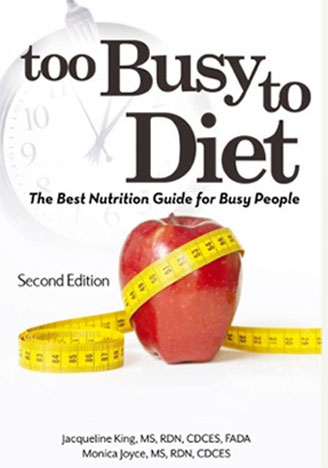White Bread is Bad For You
in The Too Busy to Diet Blog on July 21, 2015
White Bread is Bad For You
As a registered dietitian/nutritionist, I see or hear this sentence at least once a week.
And I always wonder what the big deal is about white bread? Please remember that in 1890, most families baked their own bread and it was generally white. By 1930, 90% of families were buying industrially made bread and it was mostly white. In both of these time periods we did not see the amount of obesity that we see today.
So is it the white bread that is causing our obesity problem? The facts do not seem to support this notion.
One of the occupational hazards of being a dietitian is that people view you as the ” food police”. But the reality is that
when I eat out I find myself a victim of “diet criticism”. White French bread, white rice, and semolina pasta get a harsh look or comment if it winds up on my plate. Do these foods contain cocaine or meth? No, they are foods eaten in France, Asian, and Italy and have been for centuries. And these countries are not experiencing the startling amount of obesity that we are faced with in America.
We need to take a look at the benefits of white bread first. It is a source of folic acid, iron, and B vitamins. It is also a reasonable cost source of carbohydrate and calories.It provides our body with energy.
One downside is that white bread does not contain the fiber that wheat bread contains. This contributes to feeling fuller because it is digested slower. But you have to be careful when purchasing wheat bread to read the label because the food manufacturers often add molasses and/or food coloring to give bread its brown color, but not the added fiber.
It is important to check to see that a slice of bread contains at least 3 grams of fiber per slice. You can often find whole wheat breads that contain up to 6 grams of fiber /slice.
Another good point to remember is that the government guidelines suggest that half of our grain choices should be whole grain. For the average 2000 calorie diet the number of grain choices should equal 6 servings. So if you have at least 3 grain choices that are whole grain you are meeting the goal.
As a dietitian, I feel that the most important thing to remember is that eating should be a joyful experience. Try to eat the foods that are good for you, but do not constantly worry about the media’s spin on what “the BAD foods are”. Get your nutrition information from a registered dietitian/nutritionist- your nutrition expert. You will be surprised the dietitian is less of a food policeman, and more of a helpful food friend.
To get more healthy nutrition advice, read Too Busy to Diet book and like our Too Busy to Diet Facebook page while obtaining more healthy nutrition advice.
Jacqueline King, MS, RDN, CDE, FADA
Buy the Too Busy to Diet book
Get your copy of the definitive diet reference guide and healthy eating book today. Stop reading those misleading fad diet books and read an easy to follow book on how to lose weight and keep it off from actual Registered Dietitians.

Recent Posts
- Barbeque Turkey Meatloaf
- Pescado a la Veracruzana
- Juicy Pork Chops
- Rotasserie Chicken Casserole
- Grilled Salmon & Blueberry Salad
